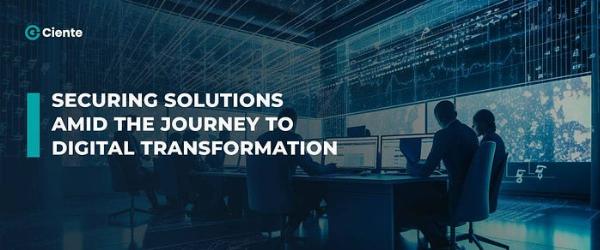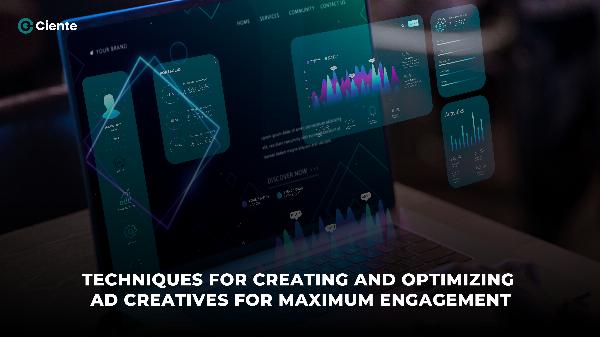Securing Solutions Amid The Journey To Digital Transformation

Strong 8k brings an ultra-HD IPTV experience to your living room and your pocket.
A digital transformation strategy is crucial for organizations to survive and thrive in the future, where technology is the primary economic driver.
The process of transformation requires more than just adopting a new technology. It requires cultural adjustments. Business leaders must create agile organizations that deal with change and uncertainty, which have become a permanent fixture of corporate life. By prioritizing adaptability and continuous learning, they will remain at the forefront of technological advancements.
The Innovation-Security Trade-Off in the Digital Age
Openness to collaboration and new ideas is crucial for innovation but can also create vulnerabilities. New tech introduces attack vectors, untested systems are prone to exploits, and digital ecosystems amplify potential damage. To enhance protection, strong encryption, robust firewalls, and meticulous access protocols are crucial. However, these measures can also hinder innovation by creating friction and potentially limiting the reach and impact of new technologies.
This trade-off manifests in several common security challenges faced during digital transformation:
1. Data Breaches and Leaks:
Increased attack surface: As we move to a digital-first environment, organizations face a larger attack surface for malicious actors.
Insider threats: Careless handling of information by employees or partners can lead to accidental data leaks.
Third-party vulnerabilities: While outsourcing is becoming more popular, relying on external vendors introduces dependencies and potential security gaps.
2. Cyberattacks and Malware:
New attack vectors: Digital transformation creates new entry points for malware, phishing attacks, and ransomware.
IoT vulnerabilities: Increasingly connected devices add complexities and potential access points for attackers.
Targeted attacks: Sophisticated adversaries may focus on specific organizations with valuable data.
3. Identity Theft and Access Control Issues:
Password vulnerabilities: Weak passwords or reused credentials can provide access to unauthorized individuals.
Multi-factor authentication challenges: Implementing and managing multi-factor authentication can be complex.
Remote access risks: Allowing remote work necessitates robust access controls to prevent unauthorized access to sensitive data.
4. Cloud Security Concerns:
Shared responsibility model: Sharing responsibility for security with cloud providers requires clear understanding and collaboration.
Misconfigurations: Improper cloud configurations can inadvertently expose data or grant unauthorized access.
Data residency and compliance: Meeting data privacy regulations across different jurisdictions can be challenging in the cloud.
5. Emerging Threats Like AI-Powered Attacks:
Deepfakes and social engineering: AI can be used to create realistic synthetic media for phishing attacks and disinformation campaigns.
Automated attacks: AI-powered tools can automate cyberattacks, making them faster and more sophisticated.
Evolving malware: AI can be used to develop self-learning malware that can evade traditional detection methods.
Building a Secure Foundation
A reactive approach to security can leave an open ground for security breaches. They might keep out minor annoyances, but against determined attackers, a reactive approach is of little use. To truly thrive, organizations need a proactive, built-in security approach backed by trust and resilience at the core:
1. Proactive Vulnerability Management: Continuously assess your systems for weaknesses before attackers discover them. Patch those vulnerabilities promptly, ensuring your defenses are airtight.
2. Zero-Trust Architecture: Implement robust access controls to verify every user and device, regardless of their origin. Adapting a “never trust, always verify” approach can be extremely helpful for overcoming security breaches.
3. Data Encryption and Granular Access: Encrypt sensitive data at rest and in transit, rendering it useless to any unauthorized eyes. Implement granular access controls, granting access only to those with a legitimate need-to-know.
4. Secure Cloud Adoption: Choose cloud providers with proven security practices and integrate security into every stage of your cloud migration. Build cloud-native applications that leverage the cloud’s inherent security features.
5. Continuous Monitoring and Rapid Response: Continuously monitor your systems for suspicious activity and train your team to respond to incidents swiftly and effectively. Maintain constant vigilance to thwart potential threats.
Integrating Data Security with Solutions for Digital Transformation
Integrating data security with solutions is paramount for several reasons, spanning across different areas like data protection, efficiency, and user trust.
Here’s a breakdown of its importance:
Data Protection:
Minimizes vulnerabilities
Protects sensitive information
Complies with regulations
Efficiency and Performance:
Streamlined operations
Faster recovery
Enhanced decision-making
User Trust and Reputation:
Builds trustworthiness
Maintains reputation
Prevents financial losses
Looking Into the Future of Security in Digital Transformation
Traditional cybersecurity is failing in the face of evolving threats. Organizations must constantly be vigilant, with employees trained to spot breaches, regular vulnerability assessments, and seamless collaboration between IT and business. Adaptable security measures and continuous improvement are essential for gauging the ever-changing digital landscape and securing valuable assets.
In this relentless digital evolution, only the vigilant and adaptable can secure the future.
The question is, how secure is your team for digital transformation?
AUTHOURS BIO:
With Ciente, business leaders stay abreast of tech news and market insights that help them level up now,
Technology spending is increasing, but so is buyer’s remorse. We are here to change that. Founded on truth, accuracy, and tech prowess, Ciente is your go-to periodical for effective decision-making.
Our comprehensive editorial coverage, market analysis, and tech insights empower you to make smarter decisions to fuel growth and innovation across your enterprise.
Let us help you navigate the rapidly evolving world of technology and turn it to your advantage.
Note: IndiBlogHub features both user-submitted and editorial content. We do not verify third-party contributions. Read our Disclaimer and Privacy Policyfor details.







